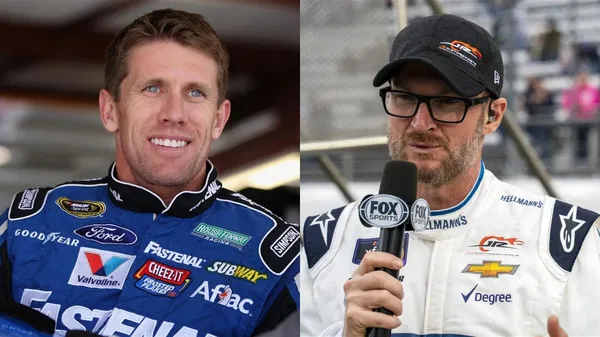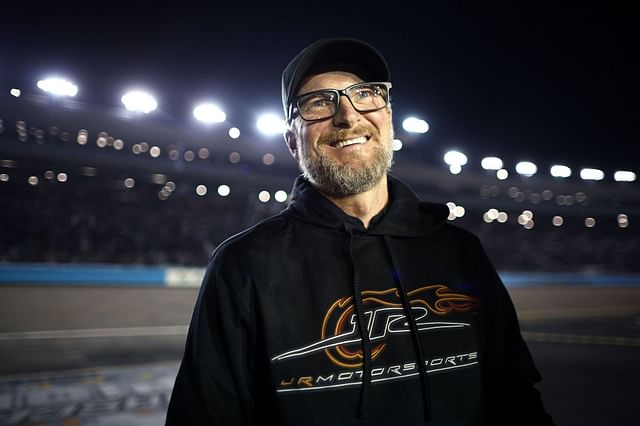Sunday’s NASCAR Cup Series Go Bowling at The Glen at Watkins Glen International was a dramatic race from the very start, with a gripping battle for the win between Chris Buescher and Shane van Gisbergen. However, the race was not without its controversies, particularly for defending NASCAR Cup Series champion Ryan Blaney. His day ended before he even completed a lap, and he found himself questioning NASCAR’s Rule Book, specifically the damaged vehicle policy.
Blaney’s troubles began right on the first lap. A collision between Corey LaJoie and Kyle Busch in the bus stop triggered a chain reaction, which caught several playoff contenders in its wake. Among those affected were Christopher Bell, who spun out, and Denny Hamlin, who collided with Busch’s spinning car. Blaney, who had been trying to avoid the chaos, found himself on the periphery of the incident. As Brad Keselowski veered to dodge the crash, he barely clipped the front corner of Blaney’s car. Though the contact seemed minor, it had severe consequences for Blaney, breaking the steering column on his No. 12 Team Penske Ford Mustang.
Blaney was unable to drive his car back to the pit area, which, according to NASCAR’s Rule Book, meant his race was over. Back in the garage, Blaney was frustrated, expressing anger over the situation. While it was unclear if his car could be repaired, the fact that his team wasn’t even given the chance to assess the damage didn’t sit well with him.
“They didn’t give us a chance to fix it. How are they going to dictate if we are done or not?” Blaney said, questioning NASCAR’s decision. “They have no idea of the damage.”
The damaged vehicle policy was designed to prevent severely damaged cars from returning to the track in an unsafe condition, often just to gain a few extra championship points. However, in Blaney’s case, the damage didn’t appear catastrophic, and he was upset that the black-and-white ruling of the policy meant his day was over without an opportunity for repairs.
Blaney found the situation even more frustrating because he likened his problem to a driver dealing with a flat tire, a situation where the car could be towed back to the pit for repairs. He didn’t understand why his case was treated differently.
“They said we were done because I couldn’t drive it back to the pit box, but if you have four flats, you get towed back. You can’t drive that either,” Blaney argued. “I don’t know what’s going on or why they won’t give us a shot to work on it.”
Blaney’s frustrations highlight a potential flaw in the current policy. While the intention of the rule is clear, situations like his—where the damage appears minimal—make it seem overly rigid. Should there be some flexibility or judgment allowed in such cases? Or is it better to keep the rule straightforward to avoid inconsistencies? These are questions that are difficult to answer, and both sides have valid arguments.
Blaney’s frustration was compounded when he saw other drivers with more serious crashes continue the race. For example, William Byron’s car went airborne and landed on Keselowski’s car, but Byron managed to finish the race. Meanwhile, Blaney was sidelined early after what seemed like a minor incident.
At the core of Blaney’s complaint was the desire to give his team a chance to assess the damage. He wasn’t sure if the car could be fixed, but he felt robbed of the opportunity to find out. The decision to end his race so abruptly left a bitter taste, especially since it affected his playoff standing.
“I don’t even know what happened, honestly. We stacked up, and I caught someone in the left front, and it completely broke the steering,” Blaney explained. “I don’t know if we could have fixed it, but the frustrating part is they didn’t even let us try. We didn’t even get a chance to look at it before it was over.”
Despite the setback, Blaney had entered the race with a 45-point cushion in the playoff standings. Many of his fellow playoff contenders also faced difficulties during the race, which minimized the damage from his early exit. Still, Blaney dropped six spots in the standings and now finds himself just 29 points ahead of Denny Hamlin, the first driver outside the playoff cutline.
With Bristol Motor Speedway up next, a track where Hamlin has won twice recently, including last year’s night race, Blaney will have to fight to maintain his playoff position. If he fails to advance to the Round of 12, he may look back on the damaged vehicle policy that ended his day at The Glen as the turning point of his season.
‘It Stinks’: Ryan Blaney Frustrated by NASCAR’s Damaged Vehicle Policy




